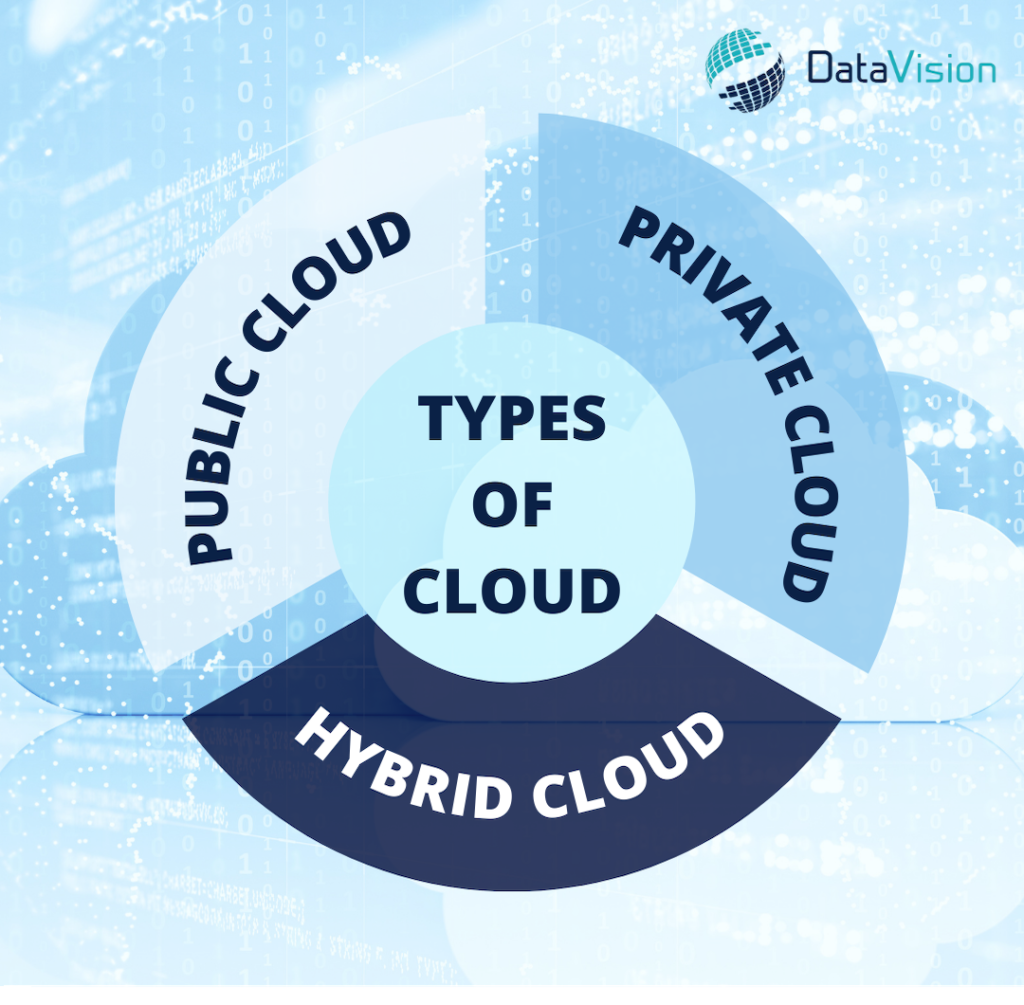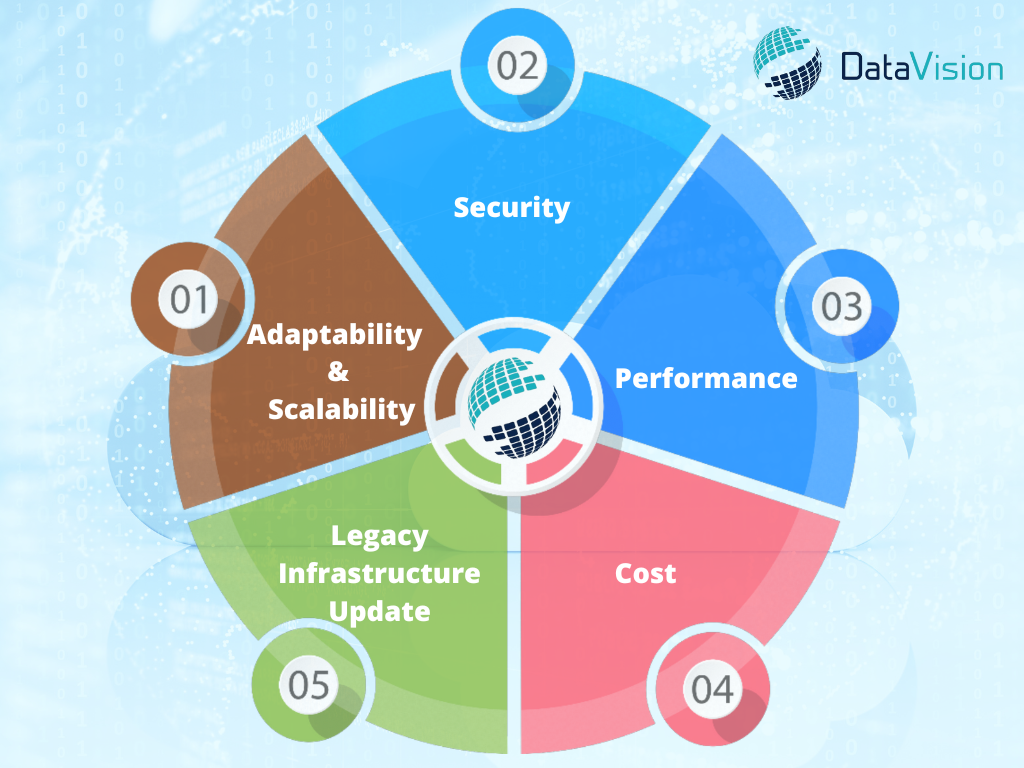DataVision was founded in 1992 with the purpose of providing clients with customisable, scalable and affordable banking software products and solutions.
Uchil Heights, Jagdishnagar, Raj Bhavan Road, Aundh, Pune - 411007, Maharashtra, India
+91-20-25690661/2/3
info@datavsn.com

Cloud Migration: Biggest Risks Banks Need to Know (and how to avoid them)
What Does Cloud Migration Entail?
The process of migrating to the Cloud consists mostly of moving parts, data, and applications. The destination is the cloud computing environment, or a particular pool of Internet-accessible computer services, ensuring that you can access your data directly and on purpose.
This new storage is advantageous since it provides direct access without the need to install and configure the application on your computer. It is identical to borrowing a book from a library without purchasing it.
The previous legacy infrastructure or local on-premises server is typically the starting point for cloud migration. The process mirrors moving to a larger apartment, with all the preparation and packing required, the completion of the voyage, and the achievement of a more comfortable future that was worth the effort. Similar to this real-world scenario, some data may be left behind or modified during cloud migration. Moreover, depending on the process’s complexity, you can choose between online and offline connectivity. All of these factors contribute to the adaptability and flexibility of this strategic action.

Types of Cloud
There are essentially three sorts of clouds you can use:
Types of Transfer
Depending on the data composition and goal of the transfer, there are three types of cloud migration:
Typically, service providers deal with the first category. Concurrently, cloud migration occurs to capitalize on the benefits of various cloud types. If you’re looking for cost-effective technology, you should choose a scalable public cloud that guarantees pay-per-use pricing. The private Cloud provides additional security and control over your data. A hybrid cloud solution is also available.

Advantages of Cloud Migration
The following benefits are associated with cloud data transfer across all industries, including banking, insurance, and healthcare:
Principal Risks of Cloud Computing
Cloud Migration: Risk-Avoidance and best Practices
Most cloud migration risks may be mitigated with a strategic strategy that identifies the process stages and actors. In addition, it would be beneficial to utilize dependable technology and establish defined migration objectives. Develop a detailed implementation strategy.
Always begin with a plan when addressing database migration to cloud-related issues. Thus, you can avoid unpleasant shocks and problems that may arise when your vital data is stranded in the middle of nowhere.
Here is a general outline of how to introduce cloud migration intelligently:
How Can Datavision help?
On their digital transformation journey, we assist a variety of financial institutions and global banks. Our one-of-a-kind approach, which combines people, process and technology expedites the delivery of superior results to our clients and drives excellence. Several reputed companies leverage our proprietary suite of business excellence tools and services to unlock new growth levers and unparalleled ROI.
Datavision stands proudly as a prominent banking software solutions provider, recognized for our unwavering commitment to excellence in the industry. We have earned our esteemed reputation by consistently delivering cutting-edge core banking software, catering to the needs of both retail and corporate banking software sectors. At Datavision, our mission is clear: to provide our clients with the best banking software products, ensuring that they stay ahead in an ever-evolving financial landscape. We take pride in serving our prestigious clients and look forward to continuing our journey of innovation and excellence.
Get in touch with us for customizable, scalable, and affordable banking software products and solutions. Our portfolio of banking software product and services include:
Core Banking Solutions FinNext Core | FinNext Islamic Banking | FinTrade | EasyLoan | MicroFin
Digital Banking Solutions IBanc | MobiBanc | MBranch | FinTab | FinSight
Risk & Compliance FinTrust | InvestRite
Want to know how our team of experts at Datavision offer our reputed clients customisable, scalable and affordable banking software products and solutions? Visit us to know more.
 Ensuring Compliance in Financial Software Development
March 31, 2025
Ensuring Compliance in Financial Software Development
March 31, 2025
 The Role of Microservices in Modernizing Core Banking Systems
March 19, 2025
The Role of Microservices in Modernizing Core Banking Systems
March 19, 2025
 How Blockchain is Impacting the Future of Banking
March 3, 2025
How Blockchain is Impacting the Future of Banking
March 3, 2025
 Data Privacy in Financial Services: Best Practices and Strategies
February 14, 2025
Data Privacy in Financial Services: Best Practices and Strategies
February 14, 2025
 Improving Trade Finance Operations through Technology
January 30, 2025
Improving Trade Finance Operations through Technology
January 30, 2025
 The Future of Mobile Banking: Trends and Predictions
January 16, 2025
The Future of Mobile Banking: Trends and Predictions
January 16, 2025
 A Guide to Effective API Management in Financial Services
December 31, 2024
A Guide to Effective API Management in Financial Services
December 31, 2024
 Top Challenges in Developing Secure Fintech Applications
December 16, 2024
Top Challenges in Developing Secure Fintech Applications
December 16, 2024
 Best Practices for Implementing EFT Switch Solutions
November 30, 2024
Best Practices for Implementing EFT Switch Solutions
November 30, 2024
 Exploring the Benefits of DevOps in Financial Software Development
November 14, 2024
Exploring the Benefits of DevOps in Financial Software Development
November 14, 2024